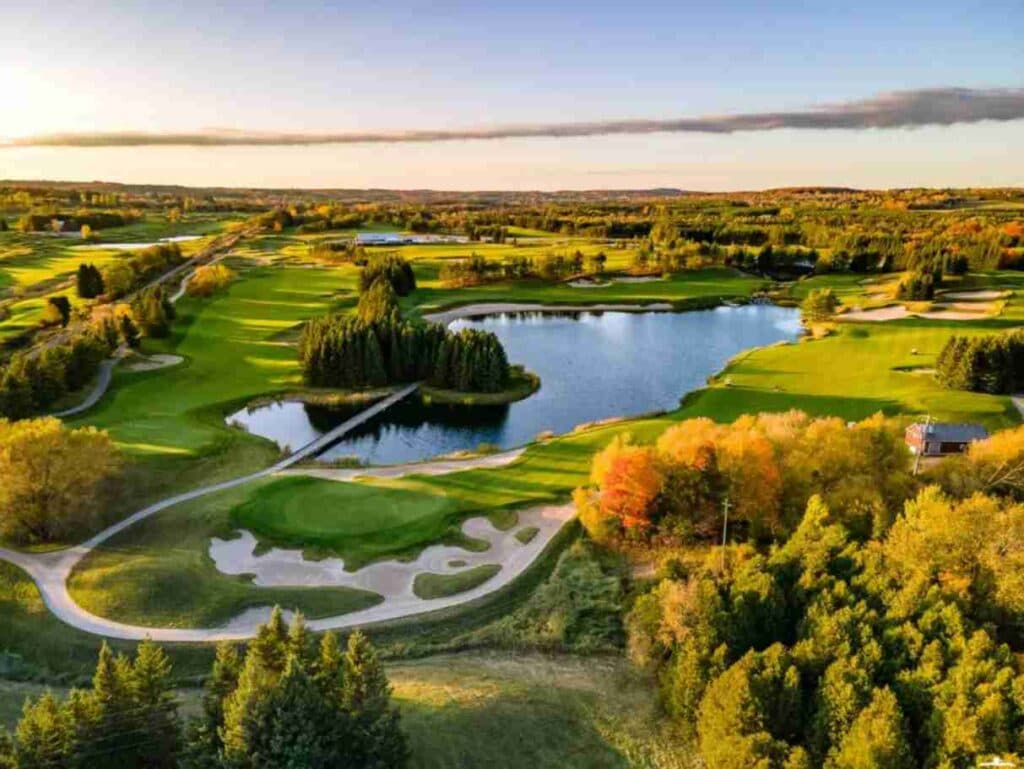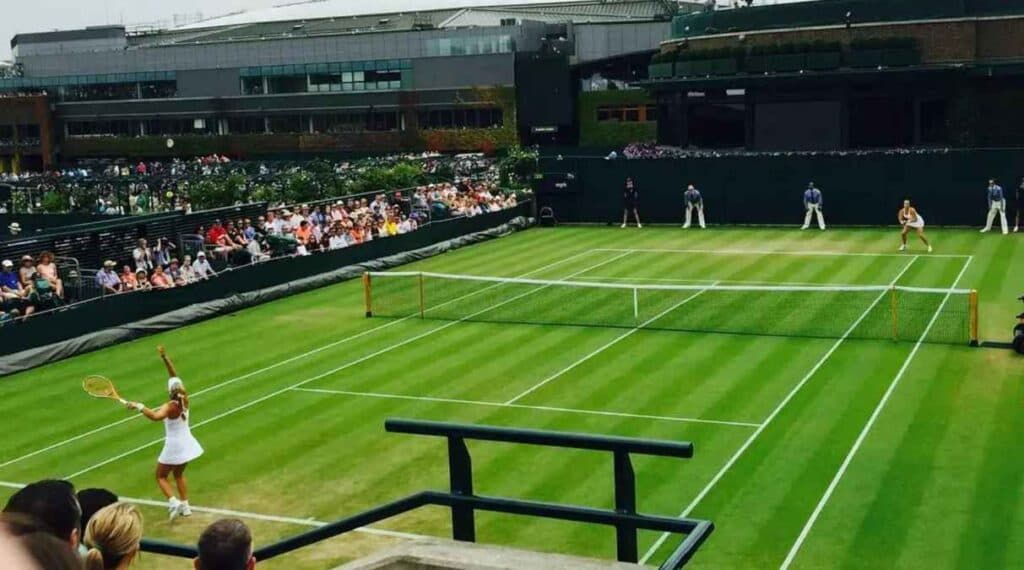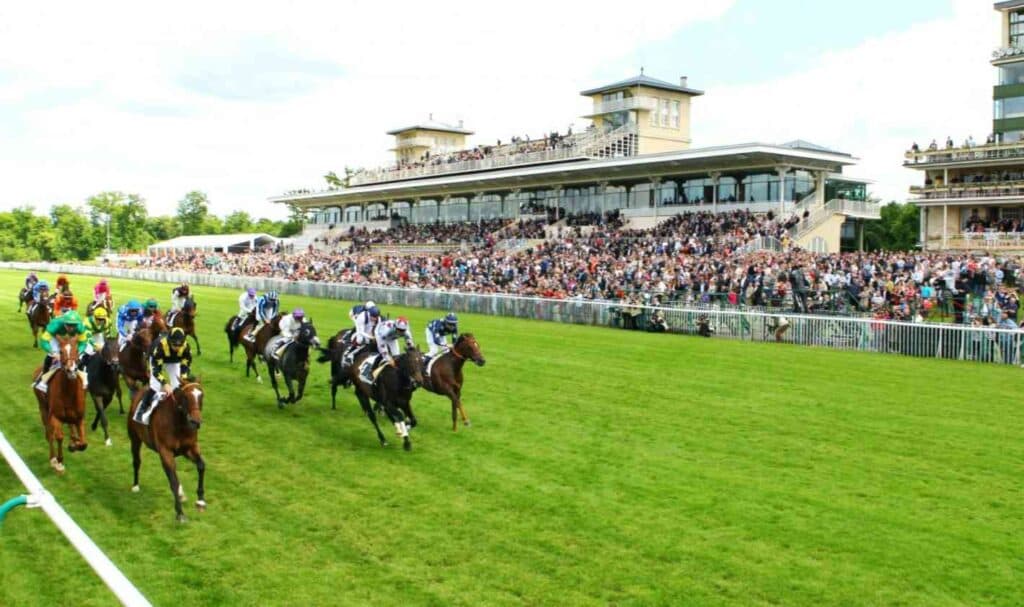Lawns for different uses—differences in fertilization techniques

How to use lawn fertilizer to fertilize your lawn?
Nutrients are the basis for plant growth, and lawn fertilizers are the food for plants. Scientific and reasonable application of fertilizers is one of the most important contents in garden maintenance. As the ancient proverb goes, “Apply gold in autumn and silver in winter.” Is fertilizing in autumn really that important? Next, TONGLi will talk to you about the fertilization technology of lawns for different purposes.
How to fertilize your garden lawn?For lawn starter
- Lawn fertilization methods are usually divided into spraying, broadcasting and spot application. Generally, large areas of lawn are fertilized mechanically, while small areas of lawn can be fertilized manually. The artificial fertilizer must be spread evenly, usually half horizontally and half vertically.
- When using liquid fertilizer, you must control the fertilizer concentration. When the amount of solid fertilizer is small, the fertilizer should be mixed with sand or fine dry soil and spread more evenly. Uniform fertilization of the lawn is the key.
- Uneven fertilization will destroy the uniformity of the lawn. Where there is a lot of fertilizer, the grass grows quickly, is dark and the grass surface is high; where there is little fertilizer, the color is light and the grass is weak; where there is no fertilizer, the grass is thin and yellow; a large amount of fertilizer In gathering places, “grass burning” phenomenon occurs, forming bald spots, reducing the quality and use value of the lawn. Therefore, uniform fertilization is particularly important for lawns.
How to Fertilize an Ornamental Lawn?Fertilizer for lawn grass

Regularly measuring the nutrients required for normal growth of turfgrass can help you calculate a fertilization plan more accurately. The growth and maintenance of bermudagrass requires a large amount of nutrients. During the growing season, it requires 4~5g/m2 of nitrogen fertilizer (pure N) per month. High-quality purple fescue lawns require 9g/m2 of nitrogen per year. Cool-season lawns require 10~ 20g/m2 nitrogen fertilizer. In order to ensure the rapid growth of high-quality lawns, the order of fertilization for cool-season lawns is late summer or early autumn, late autumn, spring and early summer.
How to Fertilize Sports Turf?Spring lawn fertilizer
For acidic or strongly acidic soil (especially in southern), it is necessary to adjust the soil pH by spreading lime or adding organic fertilizer. In order to facilitate the growth of turf grass in the spring, the amount of lime depends on the pH of the soil in the lawn bed. Nutrient levels and fertility conditions in the turf bed play a vital role in establishing a quality sports field turf. Under normal circumstances, the nutrient status of the flat bed soil should be analyzed and tested before sowing. If there is no shortage of nitrogen, phosphorus, and potassium nutrients, complete nutrient fertilizers (such as manure, etc.) should be applied. Otherwise, nitrogen, phosphorus, and potassium fertilizers should be applied respectively according to the situation.
How to Fertilize a New Lawn?Best fertiliser for grass
Under normal circumstances, a new lawn only needs to be applied with base fertilizer and seed fertilizer, and top dressing is usually not required in the year of establishment. If there is obvious lack of fertility, appropriate top dressing should be applied after each pruning in order to promote regeneration and tillering. If vegetative bodies are used to build the lawn, best fertilisers should be applied in time to promote regrowth. When fertilizing a new lawn, you should pay attention to the principle of more and less fertilizer. The best fertiliser for grass should be mainly nitrogen, while also taking into account the application of phosphorus and potassium fertilizers. It is appropriate to spray liquid top dressing on the leaves. Pay attention to the concentration to prevent burning the leaves.
How to Fertilize a Golf course lawn fertilization with good fertilizer?

Fertilization is an important step in lawn management. Due to the meticulous management of golf course lawns and frequent construction, grass clippings take away a large amount of nutrients. To ensure that the roots and stems of the lawn are enriched and nutrients are sufficient, it is best to fertilize the lawn with full-price fertilizer, which needs to ensure a balance of nitrogen, phosphorus, and potassium nutrients. Golf course lawn fertilization should be treated differently according to the nutrient demand characteristics of lawns in different areas. The lawn in the green area grows on sandy soil and is frequently irrigated, resulting in greater nitrogen losses, and the removal of grass clippings will also cause nitrogen loss. In order to keep the lawn in the green area growing lush, it is better to use “foliar spraying”. Sometimes it can be combined with drilling holes to add peat soil, peat soil, mineral mud powder and soil amendments, and the lawn will grow better. The fairway is the largest maintenance area of the golf course, and its frequency of fertilization is less than that of the green area, usually 3-4 times a year. Generally, 1%-2% special organic fertilizer leaching solution is sprayed on the leaves, and 50-50% of fertilizer is sprayed per 667m2 each time. 70kg.
Soccer field lawn fertilization: spring yard fertilizer

Top dressing is as important to lawn management as irrigation and pruning. Fertilization is an important measure to maintain the quality of football field lawns. The type and amount of fertilization should be determined based on the local climate, soil, grass species, intensity of use and frequency of mowing. If the temperature is suitable and the rainfall is sufficient, the lawn grass will grow quickly and need more fertilizer, otherwise it will need less fertilizer. In addition to supplementing nutrients such as nitrogen, phosphorus, and potassium, courses with acidic soil should also regularly apply lime powder or calcium sulfate. In the case of intensive use and serious damage to turfgrass, more fertilizer is required and the frequency of fertilization should be increased. The principle of fertilizing football field lawns should be balanced fertilization. Take soil samples regularly for testing and then customize a fertilization plan. High-intensity use of sandy football field turf requires approximately 60g/m2 of nitrogen, 8g/m2 of phosphorus, and 33g/m2 of potassium per year.
How to fertilize football field turf? Using organic lawn fertilizer

We all know that the NFL Super Bowl is the most important sports event of the year, but how to ensure that the grass in the stadium is lush? Under normal circumstances, cool-season lawn grasses such as bluegrass and tall fescue generally do not apply nitrogen fertilizer in spring and summer, and use a certain amount of potassium fertilizer appropriately. Warm-season turfgrasses such as hybrid bermudagrass are generally fertilized from May to June, and it is not advisable to apply more nitrogen fertilizer in the fall. In general, fertilizing and watering should be closely coordinated. Organic fertilizers are mostly used during the dormant period of lawns. The dosage is generally 1.5~2.0kg/m2 and applied every 2~3 years.
How to fertilizer Tennis court lawn using liquid lawn fertilizer

Generally, the most commonly used fertilizers for lawn tennis courts and lawn bowling lawns are fertilizers that can be directly dissolved in water, mainly nitrogen fertilizers and potassium fertilizers. Nitrogen fertilizer is one of the most critical nutrients required by lawns. It directly affects the growth, leaf color, stress resistance, disease resistance and trampling resistance of turfgrass. When using bermudagrass or creeping bentgrass to build a lawn, an overall fertilization plan should be developed during the growing season. Adding nitrogen fertilizer at the most favorable time can optimize the growth of lawn stems and leaves and form a hard, trampling-resistant surface. Maximize growth and development by adding additional phosphate and potassium fertilizers. The lawn should be trimmed before fertilizing; pay attention to the uniformity of fertilizing during the fertilizing process; be sure to water after fertilizing to prevent the lawn from burning.
How to Fertilize a Racecourse Lawn?Lawn grass liqud fert

Racecourse tracks are usually fertilized twice a year, usually in spring and autumn. In order to make the turf grass blades dark green and improve the ornamental value, nitrogen fertilizers such as ammonium sulfate can be topdressed a few days before the competition, with a dosage of 1.0~1.3kg/667m2. To repair the lawn after it is damaged, the amount of application should be 1.7~2.7kg/667m2 on new grass patches or grass roots. If the underground part of the lawn is not growing well, you can apply phosphate fertilizers such as superphosphate. In order to improve the stress resistance of the lawn and extend its life, potassium fertilizers such as potassium nitrate can be topdressed. The amount of potassium fertilizer used throughout the year should be less than nitrogen fertilizer.
What fertilizer is best for lawns?
Compound fertilizer for lawn
Generally speaking, it is better to apply compound fertilizer to lawns. The nutrients in this lawn fertilizer are relatively balanced and can meet the nutrients needed for lawn growth. However, when applying fertilizers, you must also pay attention to the appropriate amount and uniformity of fertilizers to avoid fertilizers. Too much amount or too high concentration will affect the growth of plants.
Urea fertilizer for lawn
Urea is a high-efficiency nitrogen lawn fertilizer and is often used for lawn greening. Excessive use of nitrogen fertilizer on lawns will cause the plants to reduce disease resistance and become infected. Improper use of nitrogen fertilizers at inappropriate concentrations can also easily cause burns, so it is generally not advisable to use it more often.
Bacterial fertilizer for lawn
Bacterial fertilizer: It is a kind of auxiliary lawn fertilizer, which is usually mixed with chemical fertilizer or organic fertilizer instead of applied alone. The commonly used bacterial fertilizer for grass lawns is nitrogen-fixing bacterial fertilizer, which exists independently in the soil and has a suitable pH value of 7.4 to 7.6. The fertilizer efficiency of bacterial fertilizer is strictly limited by environmental conditions such as soil. Under unsuitable conditions, the microorganisms in the bacterial fertilizer will be suppressed or even die, so it should be applied with caution.
When should I apply fertilizer to my lawn? Best time to appply fertiliser to lawn
Best time for applying fertilizer to the lawn: Spring
Spring is the season when lawns grow vigorously and are suitable for fertilizing. For cool-season turfgrasses, fertilize in early spring (March to April) and mid-summer (May to June). For warm-season turfgrass, the best time to fertilize is in early spring and mid-summer.
Best time for applying fertilizer to the lawn: Summer
In summer, temperatures are high and lawns grow rapidly, requiring increased fertilization. For warm-season turfgrass, summer fertilization should occur between June and August.
Best time for applying fertilizer to the lawn: Fall/Autumn
As temperatures gradually drop in autumn and lawn growth slows down, it is appropriate to fertilize to help the lawn store nutrients in preparation for winter. For cool-season turfgrass, fall fertilization is very important, usually from mid-to-late September to mid-October.
Best time for applying fertilizer to the lawn: Winter
When temperatures are low in winter, lawn growth basically stagnates, making it unsuitable for fertilizing. If fertilization is necessary, it should be done in weather above 0°C and use specially formulated fertilizers.
Is 10-10-10 compound fertilizer suitable for lawns?
Suitable, but it depends on the composition of the soil. 10-10-10 compound fertilizer is a relatively balanced compound fertilizer. The ratio of nitrogen, phosphorus and potassium is 10-10-10, so it is suitable for use on grassland, but if the composition of the soil If it is already rich in one of the elements, the effect of 10-10-10 will be limited, so it is recommended to test the soil composition and then apply compound fertilizers of different contents in a targeted manner.

